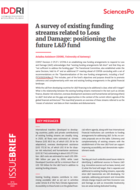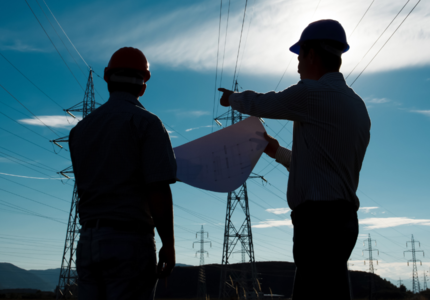A Just Energy Transition Partnership (JETP) has just been announced in Senegal, joining a small but significant pipeline of JETP deals in different stages. The attention is passionately going to their delivery. However, what will count against the narratives of failure and success of JETPs? This blogpost reflects on what has happened inside the countries, and draws lessons from the value of JETPs to date.
The Senegalese JETP deal has been announced today. Like its predecessors in South Africa, Indonesia and Vietnam, this partnership has been first codified as a joint political declaration that sets two main targets: one for energy system transformation and another one for mobilising finance. For Senegal, the former is expressed as a share of installed capacity for renewable energy sources (40% by 2030) and the latter as a combination of grants and loans adding up to 2.5 bn USD. Next steps are the formulation of an investment plan, the development of programmes and projects, and their implementation. This might sound like seeking money and projects, and emissions savings. But is that all? Surely not, so where should we put our focus to support a success story?
In a previous blogpost, we discussed under what conditions such partnerships could make a real difference in activating systems change. As practitioners, mostly working on national transitions in the Global South, we discerned the potential of JETPs for their capacity to address some of the shortcomings of an inadequate international response to the inter-related development and climate challenges. Realising this potential requires innovation and being cognizant that JETPs should be a supporting component of the broader efforts to reform the development finance paradigm to enable the sustainable development transition and thus, avoiding replicating past mistakes (or actually fixing them). The main shortcomings are the limited volume of finance, the barriers to access and its poor performance as it often does not go where it is most needed. While the 100bn promise has yet to be reached, the main focus seems to use public funding to leverage private capital rather than identify how and where the money should be spent and invested to trigger systems change. A change of perspective is necessary to adopt a demand-driven approach and to move from project finance to sectoral transformation. These difficulties are not new to practitioners regarding donor coordination or project versus systemic approaches. However, for the JETP specifically, the real shift is the need to deal with the reality of costly and socially difficult transitions.
Existing JETPs are at different stages, but it is still early days for all. About one year since its political declaration, the South African JETP has issued an investment plan and is preparing its implementation; the Indonesian and Vietnamese political commitments made over 6 months ago are still being converted into investment plans. Senegal just launched its political statement after a lengthy negotiating process. It would be too premature to appraise the success or failure of ongoing JETPs processes. Unlike investment decisions which come after a lengthy assessment and due diligence process, the novelty of JETPs was to start with a comprehensive political vision of what needs to be done over the medium and the long term. Aligning it with a list of coherent and complementary projects and accompanying public policies will be a complex endeavour that requires careful political attention and buy-in from the population. At this stage, evaluating success can only be about identifying domestic processes that are building a foundation for effective national action.
There is a story to be told of integration, governance, and capacity that stresses the value of JETPs to date. By integration we refer to establishing a development narrative that anchors energy transition plans in support of national development priorities. This narrative must speak to domestic stakeholders, as it sometimes clashes with a narrower climate/energy vision promoted by contributing countries, as experienced for instance in the African context. JETP approaches have been perceived as too restrictive by recipient governments and/or civil society in terms of what can be funded: too often, the objectives to increase energy access or food & water security, or local innovation, value chain development, industrialisation and job creation are absent while grant support or concessional funding is insufficient to accompany and support new socially just approaches and enabling policy shifts. In Indonesia, a wider approach could focus on the need to develop capacity & establish the necessary technologies to make renewable energy sources competitive, and the discussion on how to enable the country’s consideration on tariff structures and design, or how to get free basic electricity allocations to households. In Senegal, energy access is a key issue, which has been called to be part of the JETP discourse. Recognising that Africa has the world’s largest energy access gap and most of the energy systems still needing to be built means energy access and security are a priority for the continent and should be central to JETP narratives. For all this, in-country stakeholders have requested a clear problem definition and association of the key objectives of these partnerships towards the development of a prosperous and resilient nation. This has required upfront identification of required transformations and the development of a deep understanding of critical barriers. In Senegal, this has been provided under the ongoing DDP process feeding the development of a Long-Term Strategy (LT-LEDS), and South Africa and Indonesia have also been able to bank some of these considerations up thanks to their previous LT-LEDS work. In South Africa, extensive work had ironed out the intention & political vision﹣even if the specifics had not been fully envisioned or planned﹣and the selection of investments was considered as part of this vision of a long-term transition, and not just framed in short-term emission reductions targets.
These country experiences also provide learnings when it comes to governance, i.e. the built up of domestic processes, partnerships and institutions as a necessary foundation to policy implementation, including those aiming at agenda setting, building coalitions, monitoring and coordinating action and mobilisation of stakeholders, or aligning international and national goals. In South Africa, the JETP ignited the in-country discussion on the diverse interpretations of “Just Transition”. The President of the country mandated a highly respected institution, the Presidential Climate Commission, the orchestration of this effort in an inclusive manner, which is an innovation on the way domestic climate policy had been done to date. The JET Investment Plan became an expression, albeit partial, of these diverse and well-articulated perspectives at that point. The Senegalese JETP found the means to engage key domestic constituencies in a sophisticated institutional governance set-up established for the DDP process: a programme developing the evidence base on climate-compatible development pathways co-chaired by the Ministry of Energy and Ministry of Environment, together with a strategic committee that gathers a broader range of authoritative stakeholders, including high-level ambassadors. The challenge may be the capacity to give continuity to such a process beyond the submission of the LT-LEDS to the UNFCCC to continue informing investment plans in a legitimate and coherent manner. Across these countries, long-term planning governance has been reinforced thanks to the JETP processes, but it is worth noting the leveraging implications of being able to start from an existing robust governance﹣and therefore, the importance in investing in readiness. Enhanced governance could also improve coordination to avoid falling back into the trap of a juxtaposition of projects with the risk of losing the comprehensive vision. JETPs value added is in building on long-term strategic pathways as a channel to better understand what type of financial instrument (grants, concessional loans, guarantees, capital market loans) should be used to fund which specific activity, and which activity is necessary to achieve what ultimate transformation. Such a transformative agenda requires a solid governance including all relevant stakeholders and cannot rely on the work of one-shot foreign consultancies. Grounding the JETP deals in well established governance can also facilitate the move to implementation once the deal is signed.
Finally, JETPs have shown the capacity to contribute to building in-country capacities, which are indispensable for any transformation (Sokona, 2021). The partnership provides support, tools and time for countries who had not done so yet, to create a long-term energy transformation plan over multiple decades. Generating data has been a huge challenge across all countries: to advance modelling approaches, in-country experts are being asked to do higher spatial or temporal granularity for example, and to expand the scope of their analysis to cover key aspects of a Just Transition, such as evaluating the impact on the income of mining workers, or the skills required to transform employment, or the macro-economic implication of of renouncing to extract and use underground fossil fuel resources. JETPs can be valued by the attention they bring to international partners in investing in in-country experts and multidisciplinary national coalitions. But it is important to note that capacity building does not only go one way: moving from project-based finance to system change finance also requires contributing countries to reflect on their existing processes and procedures to develop new capacities. This is exactly one of the challenges that the World Bank has begun to address through its Evolution Roadmap.
These three aspects (integration, governance, in-country capacities) are critical for supporting long-term transformations in a systemic manner, and therefore constitute a fit answer to a main shortcoming of past practices. Given the experiences on the ground, though not evenly crystalised from one country to another until now, there is a strong case to be made for the value JETPs can have in contributing to building capacity to govern development-oriented climate national transitions. If partnerships wish to make this a focus, the delivery of JETPs should evaluate these outcomes along with metrics on project delivery and emission reductions. These criteria should also be envisaged to build future JETPs and emerging experiences across all JETP countries should be actively feeding the structural reform of the global financial architecture which is underway.
Acknowledgements: The authors thank the experts who attended a recent JETP Deep Decarbonization Pathways Initiative workshop for their ideas and insights which have helped us understand what is happening inside the countries and form the core of this blogpost. These experts are: Lukytawati Anggreni, Rizaldi Boer, Herman Danel, Gelang Dewi, Swati Dsouza, Samba Fall, Amit Garg, Vibhuti Garg, Lauren Harry-Villain, Chuks Okereke, Annuri Rossita, Youba Sokona, Emily Tyler and Gigih Udi Atmo.









